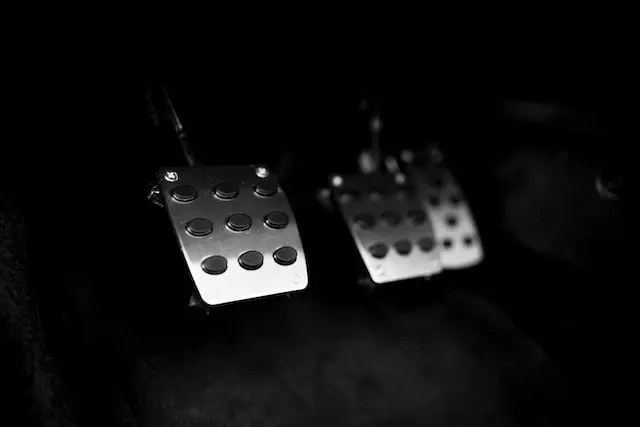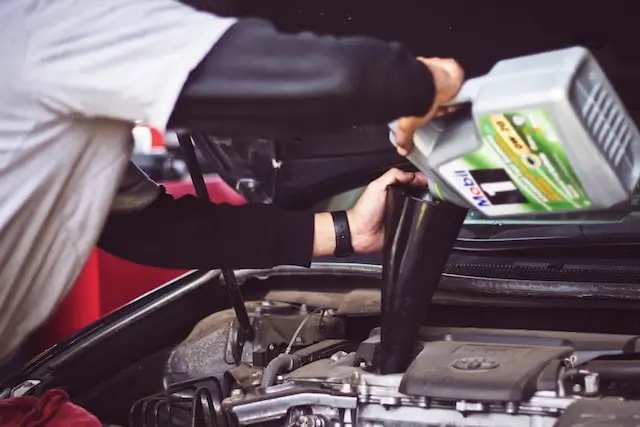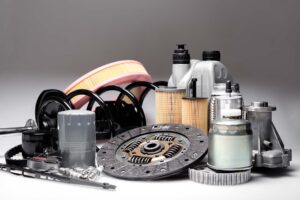Unlike manual cars, vehicles with automatic transmissions don’t have a clutch. This part is integral for a properly functioning stick-shift vehicle but can often break or have functioning issues. If you drive a manual, here’s how to tell if your clutch master cylinder is bad and what to do about it.
The clutch master cylinder typically breaks because of a fluid imbalance or impurity, but it can often get damaged due to misuse. You can’t just change this part like you could replace a valve stem or would change a flat tire, but the good news is that it’s not a complicated fix.
What Is a Clutch Master Cylinder?
The clutch master cylinder is an essential part of the engine bay; it’s a chamber that pushes fluid to help disengage the clutch pedal. When the clutch gets depressed, a pushrod in the cylinder goes against the fluid, transferring the force of your pushing down on the pedal to the transmission.
Clutch master cylinder fluid is typically hydraulic or brake fluid, which determines how well this part will work; if it becomes too dark, is expired, or you add the wrong type, the clutch pedal could jam or act up.
Solving a clutch issue isn’t as easy as cleaning seat belts, but it doesn’t have to be complicated. If you’re not a mechanic or don’t have at least basic knowledge of manual car engines, visit a mechanic you trust.
More information about this car part can be found below.
How to Tell if Your Clutch Master Cylinder Is Bad
OK, now that the automatic car drivers are gone, we can get to the essential parts – being able to tell if your clutch master cylinder is bad. Jokes aside, even if you drive a stick shift and don’t know what’s up with your clutch master cylinder, the cause may, in most cases, be a fluid issue.
Even without checking the clutch fluid every five minutes, which is unnecessary, there will be warning signs. It’s not like having to change a tail light, which one day just shuts down; this car component displays behaviors implying something wrong.
Read about the warning signs and check if any of these have been happening to your car, too:
- The clutch pedal gets stuck to the floor,
- The clutch takes time to respond or responds at different points,
- The pedal is spongy or soft,
- Depressing the clutch pedal is too difficult,
- The fluid levels are low,
- There’s the wrong fluid in the cylinder.
The Clutch Pedal Is Getting Stuck to the Floor
Even in the best cars for women, it wouldn’t take much strength to push the pedal completely to the floor. I’m not one to judge a person’s physical capabilities, but generally, pushing the pedal completely is how gears are changed and how the car stops.
If you try to change gears and your pedal stays stuck, the electricity flow into the engine will be cut off, and your vehicle will be impossible to drive. The good news is the car will stop before it goes crazy on you, but stopping is still bad news.
The Best Solution Here Is to See a Mechanic
As soon as your clutch pedal gets stuck, see a mechanic. There’s no other way to fix or make it better yourself, mainly because it’s a task in the range of replacing U-joints – worthy of a mechanic.
Why couldn’t you replace it yourself? Primarily because it’s close to the brake master cylinder and because it could run the risk of contaminating the cylinder with other fluids. A pro knows how to do this safely and efficiently.

The Clutch Disengages Much Later or When Fully Depressed
When gears are shifted, you don’t need to fully depress the clutch pedal for it to disengage. The disengagement typically happens somewhere halfway up or a bit before.
If you suddenly notice that you must fully release the clutch for it to disengage, this could change how you drive and impact the car’s behavior on the streets. This is also an issue that could happen quickly – sometimes within several hours.
Don’t try to get used to this, but attempt to fix the problem, which is likely the clutch master cylinder.
What to Do? Check the Fluid Status
When such a problem occurs, like most clutch master cylinder issues, the root of the problem is likely the fluid level. The pedal responds to depression at a different point when clutch fluid levels drop.
This shouldn’t be a complex problem, and you can likely check the fluid levels yourself. Here are the steps for doing that safely:
- Open the hood where your engine is,
- Look for the smaller clear or metal tank near the windshield,
- Check the tank’s side to learn about the fluid level,
- If the tank is metal, open it and take a look at the liquid level,
- You can also use a metal dipstick to tell you the amount.
The Pedal Feels Spongy or Soft
If the pedal feels more airy and spongy when you press it, there could be a contaminant in the clutch master cylinder. How will you tell the difference between a regular and a spongy clutch pedal? Easily – the more you drive your car, the better you’ll get to know it.
The airy and soft feeling of pressing the clutch pedal will significantly differ from what you’re used to. This can be dangerous because if you’re typically not used to pressing down hard on this pedal, the combination could further damage your car.
What to Do In This Situation?
If your clutch pedal feels softer and easier to press, there’s likely air in the cylinder. In this case, you can try bleeding the clutch to solve the issue, but if it persists, the cylinder is the problem.
To bleed the clutch means to rid its system of all fluid and other contaminants. This will remove the liquid and air, but you’ll need brand-new hydraulic fluid. The trick is to know how to pour it in without worrying about other contaminants again. Here’s what I use to bleed the clutch on my four-wheeler:
- DERPIPE Soft Braided PVC Tubing,
- CSBD Clear Plastic Jars,
- Powerbuilt Car Jack combo set,
- Great Neck Saw Brake Bleeder Wrench.
If you cannot bleed the clutch without botching something, seek professional advice or take the car to a mechanic you trust.

Depressing the Clutch Feels Too Difficult
Whether your car is for city or off-road driving, if it has a stick shift, it has a clutch master cylinder. The cylinder’s role is to help the clutch disengage safely, so if there’s a fluid leak, it’ll be faulty and likely won’t let the clutch depress and disengage.
When you experience this, check for fluid leaks and levels before taking your car to the mechanic. Again, bleeding the clutch is a good solution if you’re not keen on going to a car shop immediately.
If the clutch works well after the fluid change, it’s a sign to replace it. If you’ve ever taken gas out of the car, bleeding the clutch will be similar. If you’ve never done it, research it before your first attempt.

The Clutch Fluid Is Low or Too Dark
After you experience one or all previously listed problems, check out the engine bay and locate the clutch fluid container. As mentioned, it’s just by the brake fluid, which is in a larger and more squarish container.
If you see the fluid is below the standard or minimum recommended levels, adding more of it will likely solve the problem. However, ask a professional why this fluid falls below normal levels in the first place.
On the other hand, if the fluid level is OK but looks discolored, especially if it’s much darker, replacing it will be the best course of action. After about 100,000 or 200,000 miles, the clutch fluid will get darker, which is your cue to change it.
However, if you’ve recently changed the fluid and it’s already dark, that’s a cause for concern, and the likely issue is the clutch master cylinder.

Clutch Master Cylinder Replacement Costs
Repairing this cylinder costs around the same as replacing a bad car thermostat, $200 to $300. If you want to do it yourself, get an aftermarket cylinder for between $60 and $150. If we count it at $60, you could fare well and save a lot of money.
Still, because this cylinder is crucial for the proper functioning of your manual car, replacing it without prior knowledge could be disastrous in the long run. The best solution is to take the cylinder and your vehicle to the repair shop and rely on a pro.
The downside of professional help is that the “legwork” costs, sometimes double the price of an aftermarket car part.
Sometimes The Best Solution Is to Replace the Fluid
Of course, sometimes, the solution will only be to replace the fluid. Before deciding you need a completely new clutch master cylinder, eliminate other potential problems, such as the clutch fluid.
I recommend consulting with a professional mechanic. Ask them to check just that issue, and they’ll do it quickly. What do I mean by this? If you go to a mechanic and say you want your car fixed, they may charge you for anything, including cleaning the steering wheel, without you realizing it.
Not all mechanics are scammers, but many are, so get acquainted with the problem and focus on the repairs happening for just that.

The Clutch Is Essential in Manual Cars and Needs to Work Well
The clutch must be in perfect shape to make any ride with a stick shift car smoother. It shouldn’t be too rigid or loose, nor affect your driving. The clutch master cylinder controls fluid flow between it and the pedal. If the fluid is contaminated or low, the pedal won’t work correctly.
When you experience this issue, the first thing to do is check the clutch fluid. It’s usually the cause of most clutch problems and is easily solvable. However, if the fluid is OK, but the problems persist, a trip to the mechanic will be ideal. Don’t wait for your car problem to affect its performance.








